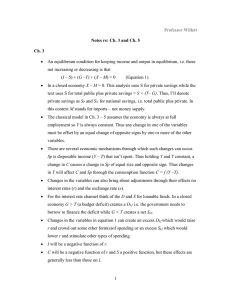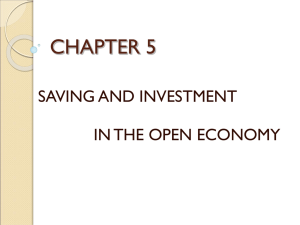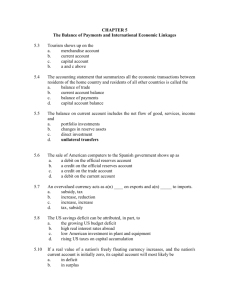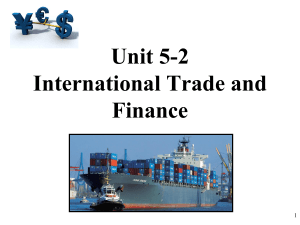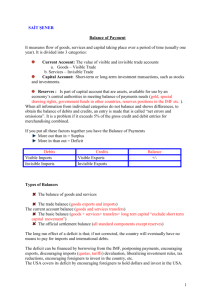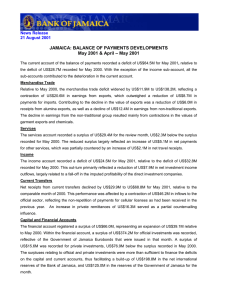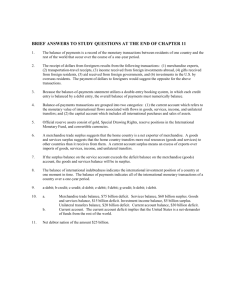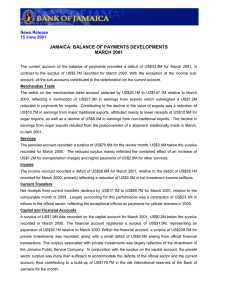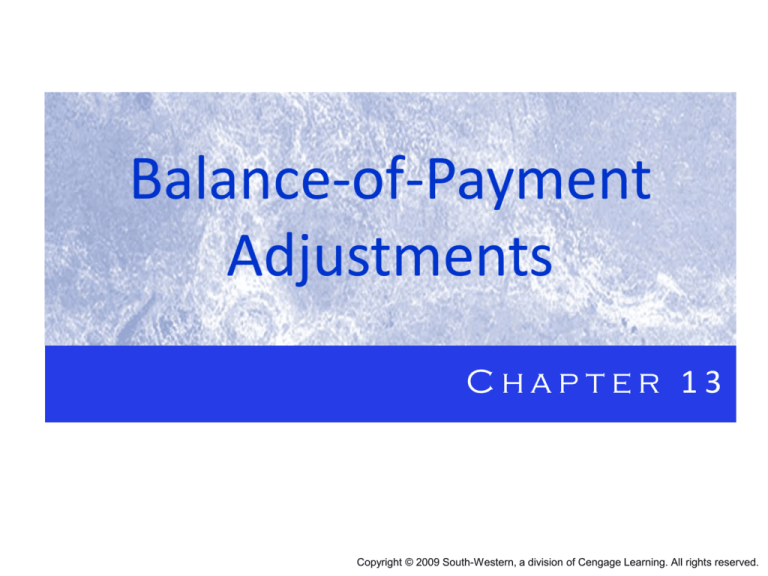
Balance-of-Payment
Adjustments
Chapter 13
Copyright © 2009 South-Western, a division of Cengage Learning. All rights reserved.
Price Adjustments
o Hume: balance of payment moves towards
equilibrium automatically as national price
levels adjust
o gold standard
• each nation’s money supply consisted of
gold or paper money backed by gold
• each nation set price of gold in terms of its
currency
• free import and export of gold
o balance of payments surplus causes nation to
acquire gold and increase its money supply
Quantity Theory of Money
o equation of exchange:
MV = PQ
M = nation’s money supply
V = velocity of money
P = average price level
Q = volume of final goods
o classical economists assumed V and Q were
constant
o implication is that balance of payments is
linked to money supply which is linked to
domestic price level
Balance of Payments Adjustment
o assuming balance of payments deficit
• gold outflow (under classical gold standard)
• decrease money supply
• reduce domestic price level
• increase international competitiveness
• increase exports and decrease imports
• return to balance of payment equilibrium
o assuming balance of payments surplus
• opposite movements in each variable
would lead to fewer exports
• again returns to equilibrium
Counterarguments
o nation’s money supply no longer linked to its
gold supply
o central banks can offset a gold outflow through
expansionary monetary policy or a gold inflow
through restrictive monetary policy
o if full employment does not exist prices may
not rise in response to an increase in money
supply
o prices and wages may be inflexible in a
downward direction
Interest Rate Adjustments
o nation with a balance of payments surplus has
increase in money supply leading to lower
interest rates
o nation with deficit sees decrease in money
supply leading to higher interest rates
o interest rate differential leads to flow of
investment capital from surplus nation to
deficit nation
o facilitates balance of payments equilibrium
• exception – if central bankers reinforced
interest rate adjustments
Financial Flows
Financial Flows (cont.)
o higher U.S. interest rates leads to a net financial
inflow represented by point B
o lower interest rates would lead to a net outflow
represented by
point C
o CFA0 implies
interest rate
differentials
are sole
determinant of
financial flows
Income Adjustments
o Keynesian assertion
o income determination
• nation with surplus will have increased
income leading to increased imports
• nation with deficit will see income decline
leading to fewer imports
• assumption of fixed exchange rates
o foreign repercussion effect – increase in
income stimulates imports causing an
expansion abroad which in turn increases
demand for home country’s exports
Monetary Adjustments
o quantity of money demanded
• directly related to income and prices
• inversely related to interest rates
o money supply as multiple of monetary base
• domestic component – credit created by
monetary authority
• international component – result of foreign
balance of payments disequilibrium
results:
o excess money supply => deficit
o excess money demand => surplus

